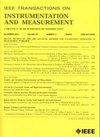Multiscale Cross-Channel Transformer for Parameter Measurement in Oil–Water Two-Phase Flow
IF 5.9
2区 工程技术
Q1 ENGINEERING, ELECTRICAL & ELECTRONIC
IEEE Transactions on Instrumentation and Measurement
Pub Date : 2025-07-10
DOI:10.1109/TIM.2025.3586383
引用次数: 0
Abstract
The accurate measurement of water cut and total flow rate in oil–water two-phase flow is crucial for effective oilfield management, particularly in high water-cut environments. The inherent complexity of oil–water flows, characterized by diverse flow patterns and significant nonlinear behaviors, poses substantial challenges for traditional measurement techniques. To address these challenges, we propose a multiscale cross-channel transformer (MSCC-Transformer) model designed to analyze high-frequency signals collected by a double-helix microwave sensor (DHMS). The MSCC-Transformer employs cross-channel multiscale embedding (CCME) and multiscale multihead self-attention (MMHSA) mechanisms to capture intricate interchannel dependencies and extract both fine-grained and long-term features. Moreover, a global average pooling (GAP) layer is used to integrate multiscale information, enhancing feature representation and improving measurement accuracy. The experiment determined 1.3 GHz as the optimal operating frequency for the DHMS. Additionally, dynamic experiments show that the MSCC-Transformer significantly outperforms the existing time-series models in measuring water cut and total flow rate, demonstrating its robustness and accuracy.用于油水两相流参数测量的多尺度跨通道变压器
油水两相流含水率和总流量的准确测量对于有效的油田管理至关重要,特别是在高含水环境中。油水流动的内在复杂性,以其多样的流动模式和显著的非线性行为为特征,对传统的测量技术提出了重大挑战。为了解决这些挑战,我们提出了一个多尺度跨通道变压器(MSCC-Transformer)模型,旨在分析由双螺旋微波传感器(DHMS)收集的高频信号。MSCC-Transformer采用跨通道多尺度嵌入(CCME)和多尺度多头自关注(MMHSA)机制来捕获复杂的通道间依赖关系,并提取细粒度和长期特征。利用全局平均池化(GAP)层集成多尺度信息,增强特征表征,提高测量精度。实验确定了1.3 GHz为DHMS的最佳工作频率。此外,动态实验表明,MSCC-Transformer在测量含水率和总流量方面明显优于现有的时间序列模型,证明了其鲁棒性和准确性。
本文章由计算机程序翻译,如有差异,请以英文原文为准。
求助全文
约1分钟内获得全文
求助全文
来源期刊

IEEE Transactions on Instrumentation and Measurement
工程技术-工程:电子与电气
CiteScore
9.00
自引率
23.20%
发文量
1294
审稿时长
3.9 months
期刊介绍:
Papers are sought that address innovative solutions to the development and use of electrical and electronic instruments and equipment to measure, monitor and/or record physical phenomena for the purpose of advancing measurement science, methods, functionality and applications. The scope of these papers may encompass: (1) theory, methodology, and practice of measurement; (2) design, development and evaluation of instrumentation and measurement systems and components used in generating, acquiring, conditioning and processing signals; (3) analysis, representation, display, and preservation of the information obtained from a set of measurements; and (4) scientific and technical support to establishment and maintenance of technical standards in the field of Instrumentation and Measurement.
 求助内容:
求助内容: 应助结果提醒方式:
应助结果提醒方式:


